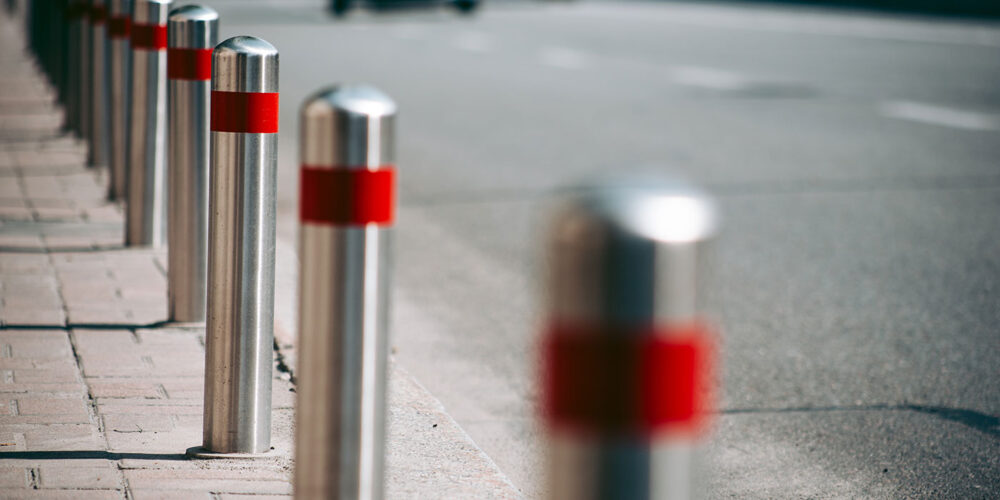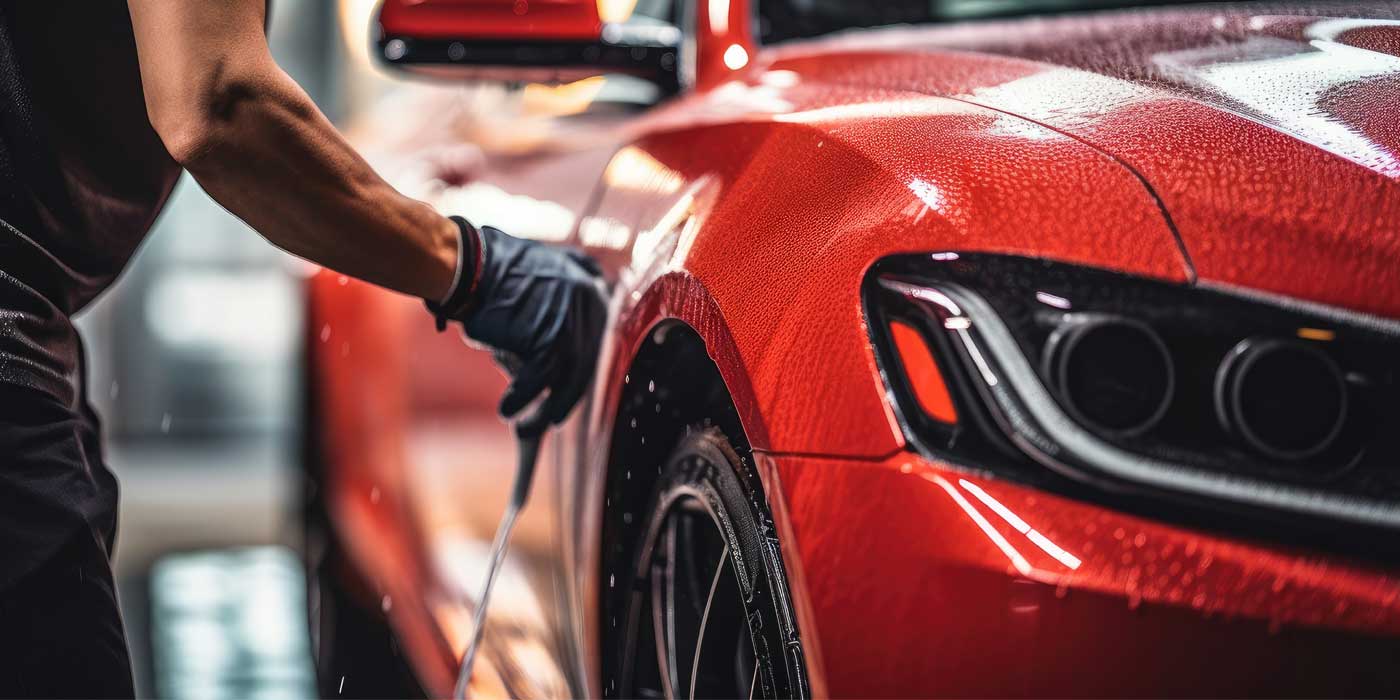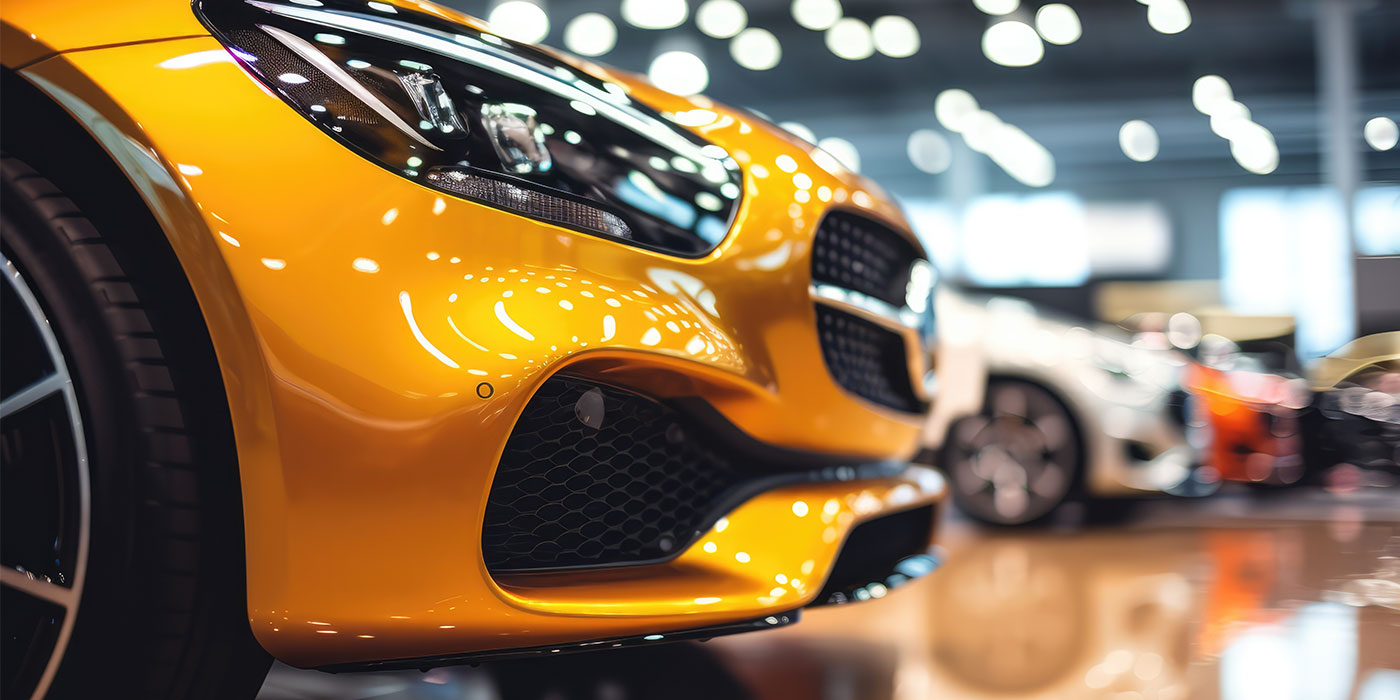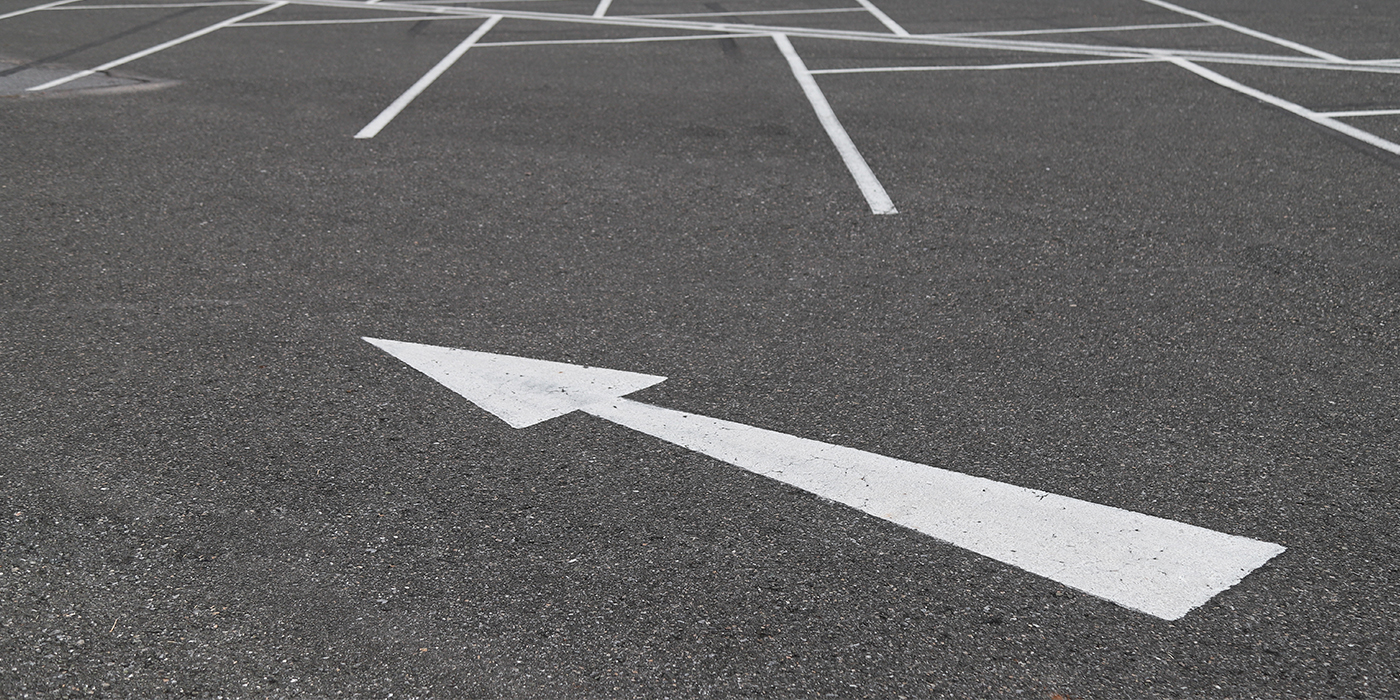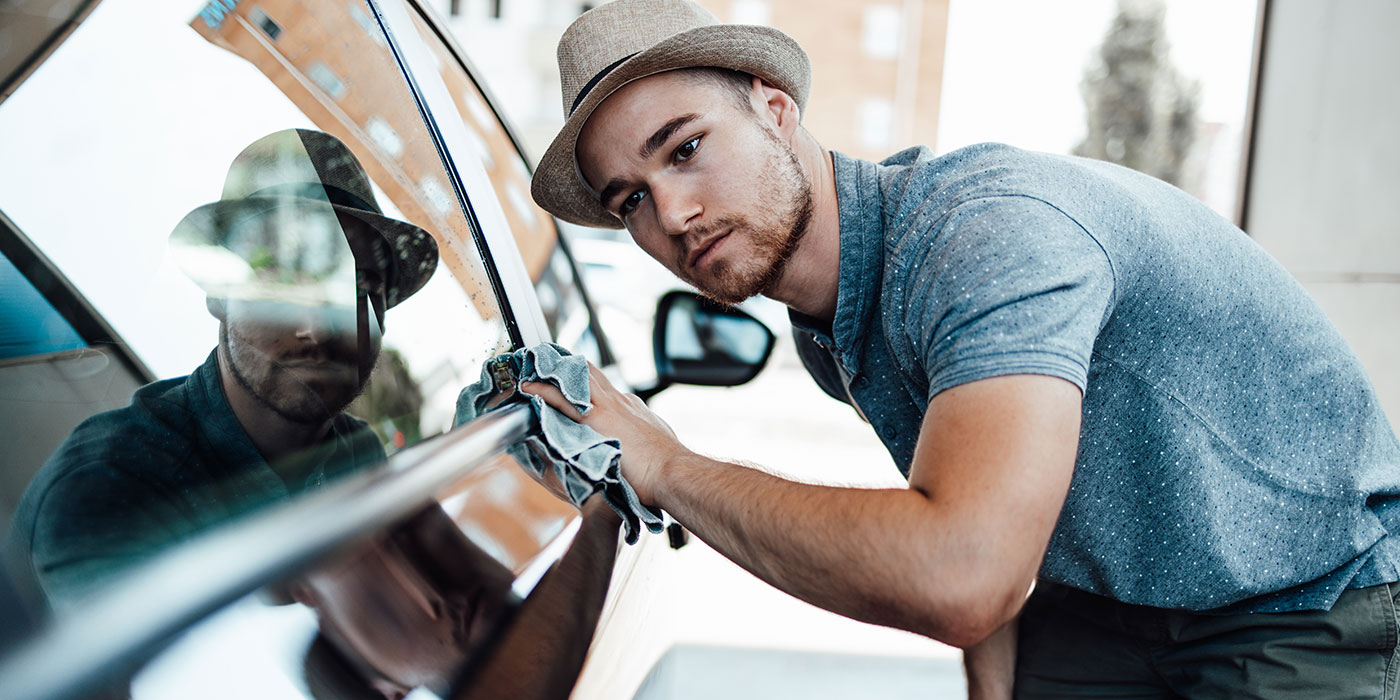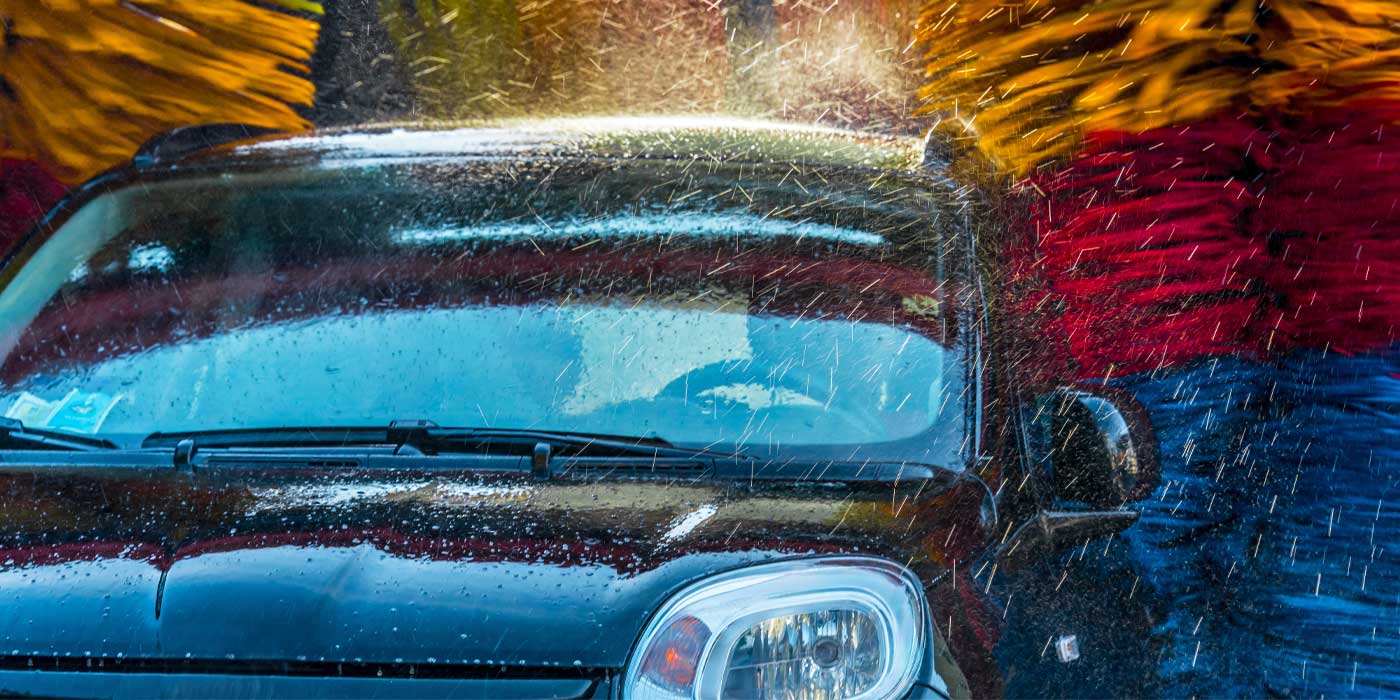How these safety features help create awareness and minimize risk at your business.
The safety of your carwash, customers and employees is a significant part of running your business. In addition to best carwash practices and machinery maintenance, it’s also important to control traffic flow, and prevent cars from entering areas reserved for customers or attendees.
This is where bollards come in.
Here’s how to choose the right ones for your needs as a professional service.
The Types of Bollards
Naturally, before you install bollards, you need to choose the type that suits your business.
There’s no need to stick to just one — a combination of a fixed-lighted bollard to protect the main building and pedestrians, and flexible bollards for vacuum and detailing stations could be what you need. However you use them, here are the options to pick from.
Fixed Bollards
Fixed bollards are the best option for those looking for long-term security and protection from vehicle-based incidents. Some establishments using fixed bollards include government buildings, airports, stadiums and schools.
You can choose from various models, whether you want to mount the bollards on a surface or embed them in the ground.
Removable Bollards
These are most suitable for occasional access and traffic-flow control. You can remove the bollards mechanically or manually to make space for cars after an event or a temporary restriction of vehicle access.
Usually, a slot is installed in the ground where the bollard will stand. You can put the bollard in when necessary, then remove it and hide the hole with the ground-cover lid to protect pedestrians and vehicles.
Retractable Bollards
Rising bollards are like security gates. They go up when you want them to and can retract to let cars pass through. Some are hydraulically powered, raising or retracting with key fobs or through remote control. These are usually for exits and entrances to the property.
Flexible Bollards
Using a patented carbon-steel torsion spring, these bollards bend upon impact to alert a driver of a boundary. The point is to stop the vehicle instead of absorbing the blow. Flexible bollards can withstand repeated bumps because of their flexibility and ability to retain their shape.
LED-Lighted Bollards
These are excellent for the front of the carwash to prevent accidents and help people find your business.
What to Consider When Installing Bollards at Your Carwash
Ready to start putting bollards up? Here are seven aspects you should think on before adding them in.
1. Bollard Use
Your business will likely use bollards for the following reasons. Note which ones are most important to you:
- Display signage like stop signs, pedestrian signs and arrows.
- Indicate designated parking spaces for vacuuming and detailing.
- Mark boundaries in parking areas.
- Signal traffic lanes.
- Protect attendants at the conveyor belt and guide cars through the conveyor entrance.
- Guide drivers inside automatic car ashes to prevent them from driving close to machines.
- Stagger entrance in drive-through car washes.
2. Number of Bollards Necessary
To determine how many bollards you need, follow recommended practices for spacing. Generally, bollards should be between 36 to 60 inches apart — this stops an average-sized car from driving through the barricade.1
For singular spaces like a detailing section, you can place one flexible bollard in each parking spot to prevent vehicles from moving past the designated area. While it’s convenient to have a carwash near a shopping center or along a highway, you’ll need enough bollards to mark the area, and put a barrier between your establishment and other businesses.2
3. Carwash Site Layout and Traffic Patterns
Consider where you need to place bollards for maximum safety. Where does the most traffic occur? Which areas need barriers to protect pedestrians and employees from potential accidents? How do you want to direct cars?
4. Adherence to K Rating and Regulations
Bollards should adhere to U.S. State Department laws for higher pedestrian security. A K4 bollard will stop an impact from a 15,000-pound vehicle at 30 mph, while a K8 will stop the car at 40 mph and K12 at 50 mph.3
They should also adhere to the American Society for Testing and Material standards F3016. A bollard should be able to withstand the impact of a 5,000-pound vehicle in order to be considered high quality.Look for ones with S10 (10 mph), S20 (20 mph) or S30 (30 mph) ratings.
5. Installation Prep
Most times, bollard installation requires some drilling to prepare the space. To make a level base, you must remove any hazards like gas lines or pipes. The area should also be spotless before installation, so use a pressure washer or air blower to clean up after drilling concrete or other types of residue. Vacuuming to remove excess moisture is also recommended.
6. Installation Type
Installation processes differ based on several factors. If you already have concrete, you must drill into the ground to place the bollards. New concrete will require different methods, like embedding bollards while builders pour the mixture or installing anchor castings.
Most likely, your carwash is established and needs to use methods that work around existing concrete, including:
- Impact protective method: If you plan to install steel-pipe bollards, you must dig holes 2 inches wider and deeper than the bollard. You’ll then install the steel pipe and pour a layer of concrete to secure the bollard below the frost line.
- Drop-in concrete insert: This works for decorative caps and bollards, removable bollards, and lighting bollards. Use a 1-inch masonry drill bit to create a hole in the concrete. Then, hammer the drop-in insert into place. Connect the drop-in insert to the threading and attach it to the decorative caps on the bollard.
- Adhesive anchor: An adhesive anchor uses the same drilling method as a concrete insert. The difference is you fill the hole with adhesive, then glue the thread bar to attach the bollard to the ground permanently.
- Surface mounting: This method is mostly for flexible and fold-down bollards. You bolt it using a base plate or flange with ⅝-inch holes on either side that will be secured with bolts.
7. Maintenance
When you choose your bollard type, learn its maintenance procedures so you’re ready when the time comes. While flexible bollards rarely need replacing, fixed and retractable bollards may need reinstallation after a car bumps into them, since they may crumble or bend permanently after impact.
Consider how you can protect bollards from corrosion and weather damage, such as a zinc coating to protect them from rain and snow. Maintenance includes regular cleaning to remove dust and residue from the cleaning process.
Install Bollards for Safety and Effective Traffic Flow
A full-serve wash will benefit from bollards to provide safe spaces for vacuuming, detailing, and finishing work in areas where people and cars are moving. When installing bollards at your carwash, you need to consider their purpose, installation techniques, the number you need and how to maintain them after installation.
Sources:
1 https://www.dot.ny.gov/portal/pls/portal/mexis_app.pa_ei_eb_admin_app.show_pdf?id=12877
2 https://modded.com/cars/entrepreneurial-ventures-for-car-lovers/
3 https://www.tymetal.com/anti-ram-barriers/
Oscar Collins is the founder and editor-in-chief of Modded, where he writes about cars, car trends and auto news. Follow him on Twitter @TModded for frequent updates on his work.

